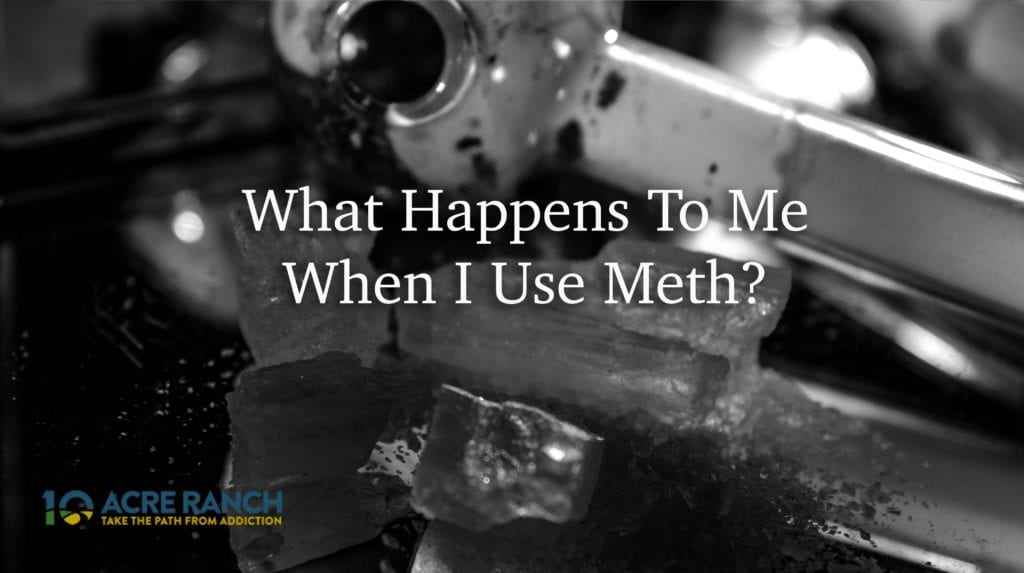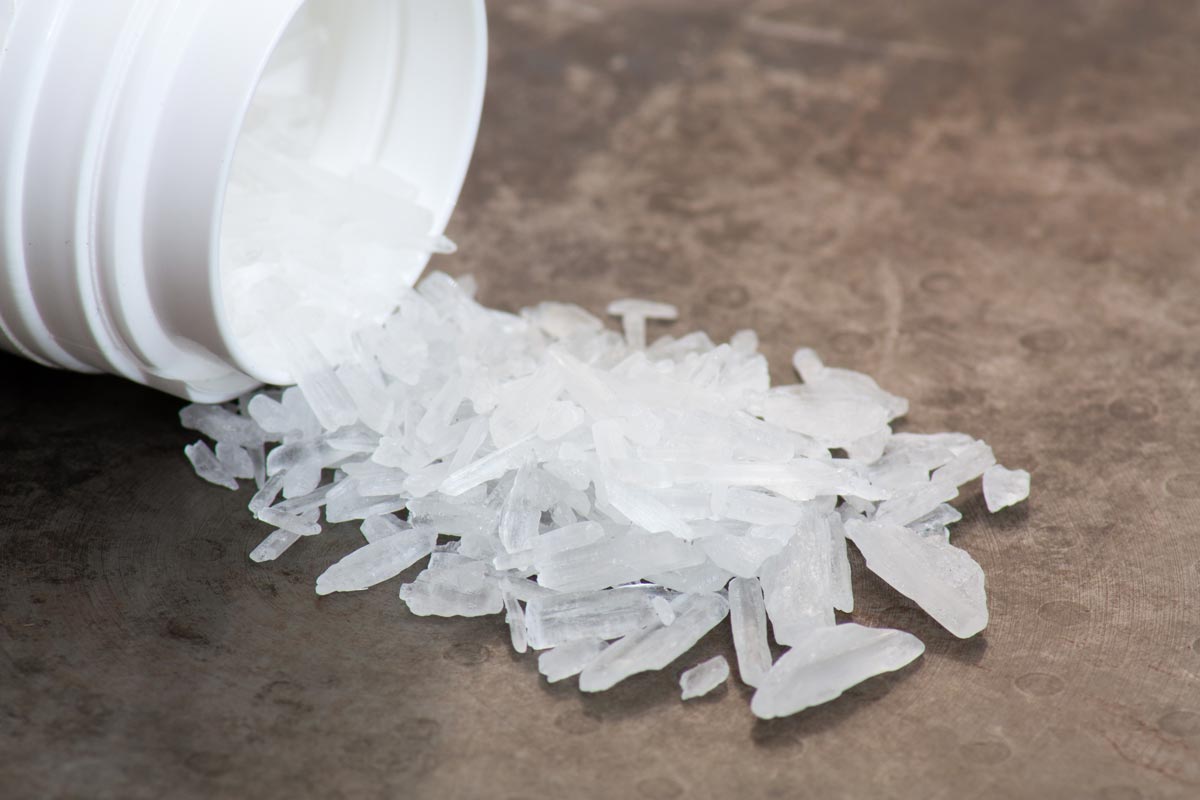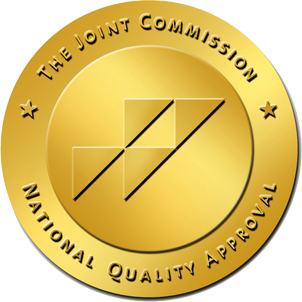
Methamphetamine, crystal meth, ice, speed or whatever you want to call it, is a powerful, highly addictive drug with deadly consequences. A very potent high is the reward for people who choose to use this deadly drug. Although the destructive potential in meth use has been widely discussed and publicized for decades, many communities around the globe still struggle with the problem of meth addiction.
As a highly powerful stimulant, this illicit drug can cause serious, long-term detrimental mental and physical effects for anyone who decides to use meth. Some of the damage it causes can become permanent. It is cheap and relatively easy to make, so its use has continued to be a common problem across the United States.
The history of meth abuse.
Meth abuse across the United States exploded in the early 1990’s, though it has been around for much longer than that. Methamphetamine was first synthesized in Japan in 1893. It was widely used during World War II, where both sides of the conflict would administer high doses to their troops to keep them awake. After the war, methamphetamine was easily available in the US through the 1950’s and 60’s. Meth was even prescribed by doctors for weight loss and depression. Meth became popular with college students and truck drivers, helping them stay awake for long periods of time.
The US government made methamphetamine illegal in 1970. After this, biker gangs controlled most of the production and supply of methamphetamine in the US. Because it was much cheaper than cocaine, many people in poor, rural communities were using the powerful stimulant. This continued until the 1990’s, when Mexican drug cartels began producing it in California and Mexico in large laboratories. The number of people who use meth grew to epidemic proportions in the US, with small home-based labs popping up all across the country.
What happens to your mind and body when you use meth?
There are numerous negative physical and mental health consequences when a person decides to use meth. The intense high someone experiences when they first use meth can rapidly lead to addiction. Meth use can cause feelings of dominance and superiority. This sudden rush of confidence can make the person seem more confrontational or argumentative. Many users feel that meth gives them an edge, helping them accomplish more over a short period of time.
Dopamine floods the pleasure center of the brain during the rush or high rapidly after ingesting the substance. The typical high from methamphetamine can last for a very long time.

Unlike crack cocaine which only lasts about 5 to 20 minutes, a meth high can last anywhere from 8 to 24 hours. Many people who abuse meth will go on binges for days or weeks, constantly ingesting the drug without eating or sleeping for days on end. This long binge on methamphetamine is often referred to as “tweaking”. When a person can no longer feel the effects of taking a dose of meth, they will typically crash as their body and brain virtually shut-down. Constant itching is common, as some people strongly believe that bugs are crawling under their skin. Due to this, many meth addicts have skin sores all over their face and body as they are trying to pick out the bugs under their skin.
Dramatic weight loss is another common physical effect of methamphetamine abuse. Meth will completely eradicate a person’s appetite. Someone who suffers from addiction to meth will typically not eat very healthy, if they eat at all.
Psychosis and vivid hallucinations are common for someone who has been on a long-term meth binge. People who enter this stage of drug abuse are likely to be completely detached from reality. Self harm and suicidal thoughts are a possible for someone coming down from a long-term meth binge.
Meth is primarily ingested by snorting, smoking or injecting the substance into the body. Each method of use has distinct differences in the effects felt by the user. Those who use meth are typically looking for a quick acting, almost instantaneous high. Either method of use will produce rapid effects and can quickly become habit forming.
The dangers of snorting meth.
Most people begin with snorting meth through the nose. This can cause severe damage to the sinus cavity. The dangerous chemicals are absorbed by the mucus membranes in the nose. Nosebleeds and regular sinus infections are some of the common side effects of snorting meth. Over a period of long term meth abuse, a hole can eventually form in the septum, resulting in permanent and irreversible damage. Snorting, or orally ingesting meth generally does not produce as intense of a high as smoking or injecting meth.
Smoking meth is highly addictive.
The more a person uses meth, the high will become shorter and less intense. Smoking meth produces a faster, shorter duration high and is the most likely form of use to cause addiction. As a person smokes meth, a tolerance to the drug will quickly develop. This will lead the user to smoke more and more over time, creating drug dependency. Smoking meth has serious consequences to the health of the mouth, throat and lungs.
Rapid tooth decay from smoking meth is a condition commonly referred to as “meth mouth”. The corrosive chemicals in meth break down the structure of the teeth and gums due to the high acidity of the drug. Clenching and grinding of teeth are a common side effect of meth use. This action further deteriorates the integrity of the teeth, causing many to fall out or rot away completely. Gum disease and mouth sores are also common for people who smoke meth. If gum disease goes untreated, it can lead to major heart problems.
Injecting meth and the dangers of intravenous drug use.
Injecting meth is arguably the most dangerous form of use. The effects of shooting up are immediate and especially intense. Sharing needles carries many negative health effects, let alone the dangers of the methamphetamine itself. Intravenous drug users commonly share needles with others when getting high. Sharing needles greatly increases the risk of contracting deadly diseases such as HIV, AIDS and Hepatitis C. Repeated use of needles can lead to collapsed veins, infections at the injection site and other types of blood diseases, such as sepsis.
Common withdrawal symptoms for meth addicts.
When someone who has used meth for a long period of time suddenly stops, very intense painful withdrawal symptoms are likely. While withdrawal from stimulants is relatively harmless, many people who quit using meth can have severe drowsiness, violent mood swings, anxiety and depression. The emotional effects of meth withdrawal can put people at a high risk for self-harm and even suicide.
At 10 Acre Ranch, we take methamphetamine abuse very seriously. When you use meth, you do so much damage to your physical and mental health it is important to complete a comprehensive drug rehabilitation. We look at the individual needs of each and every one of our patients and formulate a plan for a successful recovery from addiction. Beginning with a full medical detox, our drug rehab facility in Riverside, California is among the best in the nation. If you or someone you love has been using meth, we can help. Please call us right away, we are open 24/7 to help you get the treatment you need.






